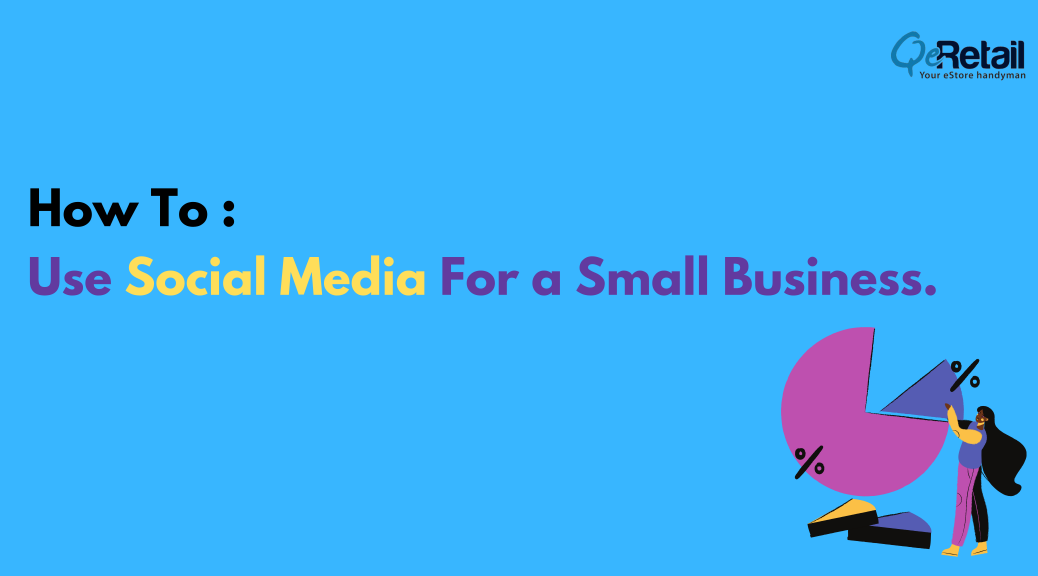In today’s digital-first world, the task of being seen and heard is as challenging as ever. Every day, a newer development is surpassing existing trends, and for business owners – staying in the loop of things is the only way forward.
As businesses across the globe continue to set out on their mission to expand their visibility, social media is one phenomenon that has seemingly come to everyone’s rescue. With its accessibility, reach and a constant presence at the back of all our phones – the medium has evolved brilliantly since its inception.
At present, the active global social media population stands at 4.55 billion. This suggests that 9 out of 10 internet users today are active on social media. Out of this, some of the key players in the sphere of social media consumption remain Facebook, Instagram and Whatsapp.
These social giants have made next to anything possible with a single tap – be it mobile shopping, setting up a business, or enabling brand owners to expand their online presence across wider channels. Social platforms have not only made it easier for audiences to find and interact better with brands, but also brands to find better ways to keep their customers engaged.
It’s no more an overwhelming task to market yourself creatively as a business, and do something new each day.
Coming to small businesses, social media works as a great enabler towards building more active, long-standing equations with customers. The medium not only lets you represent yourself better, it has now made way for your customers to shop directly through your social channels.
Gone are the days when it required a team of marketing professionals for brands to reach out to their audience. The ease-of-use and ever growing scope of social media has empowered businesses of any size to carve their own niche. Now anyone can open up an account, create content and start selling their products too – all on their mobile phones.
Still, the question remains – is that all there is to social media?
The straight answer is no, absolutely not.
There’s a lot to be learnt and unlearnt when setting out on social media. Old tricks from the hat need to go, and the space to learn something new must always be created.
In this article, we’ve listed down a bunch of helpful tips and tricks for small businesses, or businesses of any size for that matter – to win big on social media.
Read ahead to learn more!
What you will learn in this article:
1. Start with a plan.
2. Get to know your audience.
3. Quality vs. Quantity. Who’s the winner?
4. Why consistency matters.
5. Track, assess and adapt.
Start with a Plan –

First things first, always start with the groundwork.
A good social media outlay requires you to look inwards and decide on what the problem areas of your brand are – whether it’s inconsistency, or an ill-timed campaign, or the quality of your content – it’s important to see what you’re missing out on before you start afresh.
Social media is an ever-evolving game, and the one trick that doesn’t go old here is to keep adapting to the changes. Whatever your social media planner may look like – it should be just as flexible too.
While it’s a task to stand out on socials, making the big leap isn’t as tough as it sounds. The task is to capitalize on the right kind of content at the right time. Planning your content in advance and creating a schedule beforehand only makes the task easier.
Having a plan that highlights exactly what you want to achieve through your social media channels makes it easier for you to achieve your goals. A well-thought plan also lets you save time and efforts and channel them in the right direction.
Before you set out with elaborate content plans, start by having clarity on what you’re trying to achieve through your social media presence in the first place.
Is it better visibility? A wider reach? More followers? Or simply a more open-ended way to express your brand?
Be clear with your goals.
Know who you’re conversing with –

Before you start posting away, have you given thought to who your audience really is? Who are you posting for? What’s your content doing for them?
Is it solving a purpose, or is it simply entertaining? Is there a way in which you can do both?
Before you decide on the quality of your content, you need to make sure you know your audience. Their likes-dislikes, what they’re looking for out of your content, and if they’re actually even paying attention.
Next, when you set out to converse with your audiences through social media – be sure to strike conversations that make a difference.
It could be through something informative, or entertaining, or simply inquisitive – but make it a point to make your social posts meaningful.
Every brand/ individual who’s mastered the game of social media knows that they’re catering to a certain niche of audiences, and they can’t be everything to everyone. Every brand picks it’s own audience – which is a great practice in order to set yourself apart from everyone else.
There’s a fair chance that your content is of great quality, but it’s not getting across to the right people – which is a waste of time and effort. What can you do about it?
Here’s some pointers that can help you identify your audience behaviors better :
1. Identify buyer personas.
Creating buyer personas is a great way to understand your customer base better. This can be done by putting in the research into identifying your buyer’s psychology and demographics.
Like – age, income group, likes/dislikes, spending patterns etc.
Your analytics and campaign metrics are key to understanding these patterns better, and then devising content in a way that addresses your audience’s pain points.
2. Find out where your audiences spend most of their time online.
The next step is to study which social channels are being most used by your audiences. Currently, a better part of Instagram’s active user base is dominated by the younger lot. Conversely, Facebook has more of a middle-aged and older audience.
Find out who you’re targeting, and then see which social media platform they’re most active on. Doing this helps you direct your content better – to the right people, across the right places.
3. Conduct polls and surveys.
Conducting polls and surveys is a time-trusted way to get to know your audience better. It’s straightforward, it’s direct, and it gives you clear answers, not pointers that you need to connect.
These surveys help you gain a better insight into who your customers are, and what kind of content they consume on social media.
Quality vs. Quantity : Who’s the winner?

A lot of the rat race about making it big on social media is made to be about who’s posting more than the rest. In the midst of all this, what often gets left behind is good quality content.
Consistency and posting at regular intervals is important, but what’s even more important is creating content that’s actually meaningful. Content that compels your audiences to interact with your brand. Content that legitimately speaks for your business. And of course, content that people can connect with.
In recent times, it’s observed that 93% of customers use the internet to find out about a brand. How does one make sure that a fair share of this inflow is directed towards your brand as well?
Put in the research, collaborate with reliable content creators or local influencers, and don’t be afraid to innovate.
Video-based content, which is seeing an all-time rise is a great way to promote your brand and drive better engagement.
In the long-term, good quality content fetches better results than simply posting more content. After all, posting after posting doesn’t get you anywhere – unless it’s actually speaking to an audience.
User-generated content like online reviews, guest posts and even testimonials is another great way to put up better content on your social channels. This also legitimizes your business.
People trust content that’s created by people like them. It helps them develop trust in your brand, and ultimately also boosts your brand salience.
Social media let’s you get impersonal with your followers, something that most other marketing channels don’t. It’s a more open-ended space for expression, so make good use of it. Experiment with new ways, opt for new methods and explore better facets to represent your brand with content each time.
To make the task a bit easier, ask yourself these :
1. Does your content grab attention?
2. Did people share it?
3. Did it stir discussions?
4. Did it generate any leads?
5. Is it entertaining? Informative? Or both?
Stay Consistent –

Staying consistent through the process of social media posting is key to staying ahead of your game. Consistent posting makes your audience believe that you take your brand seriously, and it compels them to follow suit too.
Good quality content, coupled with a regular streak of posting across your social media handles is a surefire way to improve your engagement, as well as boost your reach.
Social platforms are prone to constant shifts – in terms of changing trends and newer ways to share and create content. It’s not just important, but necessary to keep up.
What’s just as important while posting on social media is to be in the know of market trends and what’s helping brands connect with their audiences better.
Consistency isn’t just about robotically posting – day in and out. It’s more about finding a systematic way to be seen and heard. If you post regularly but don’t really post anything that makes a difference, or informs, or entertains even – it isn’t worth it.
Scheduling your social media content is a sure-shot way to stay up to the mark with your posts.
Start by making a weekly schedule that helps you stay on track with your short term goals. And then create space for monthly planners – to keep yourself in the know of the bigger picture.
Having a pre-planned schedule makes it easier for you to not just stay ahead of the game, but also implement better strategies along the way.
Track, Assess and Adapt –

The final step to make sure your social presence is shining through is to assess the results of it. There are several ways to assess what’s working and what’s not. One of them is the A/B testing method – which gives you a good estimate of exactly which tools are working in your favour, and which aren’t.
Another simple way to track and make an assessment of how you’re performing would be to log into your in-app analytics. You can tap into the performance metrics using Instagram Business, Facebook Business, or any other social media app that you’re promoting your brand on. The key is to capitalize on key social media channels – not to overdo it.
The central purpose of an assessment is to get an accurate measure of where you’re standing. And also to know how much of your social media game plan is actually yielding results.
Conversely, this also gives you an insight into what’s not working for you, and needs to be replaced by something better.
There are multiple metrics that can help you measure your performance. But before you set out with the process of it, make sure you know what exactly it is that you want to measure in the first place.
Try introducing two different kinds of posts on your social channels – and then see which one is getting a better engagement than the other. This method not only lets you compare, but also see in hindsight – the kind of posts your audiences are looking for.
Being social isn’t as much about simply achieving an improved follower count as it is about better representing your brand.
Another way to find out if your followers are actually able to connect with your brand is by seeing your engagement ratio – likes, comments, shares, re-posts.
4 social media metrics you should measure:
1. Consumption Metrics : How many people interacted with your content?
2. Sharing Metrics : What were the number of shares, re-shares and re-posts on your content?
3. Lead Generation Metrics : Did the content usher in any form submissions or referrals?
4. Sales Metrics : How much money did you make out of it?
Benefits of Social Media for Small Businesses :
1. It’s budget-friendly, and let’s you market with minimal spending.
2. Increases brand awareness and visibility.
3. It enables you to reach multiple channels at once.
4. Helps you in getting to know your audience better.
5. Improves your website traffic and SEO ranking.
Summing up –
To wrap up, the workings of social media are constantly evolving and no one tactic works for everyone. As a small business owner, how you make the best out of your social media presence truly depends on how you best speak to your audiences.
Your social media performance also banks on how you choose to reflect your brand values through your social channels, and how authentic you stay in the process.
Thanks for reading!







